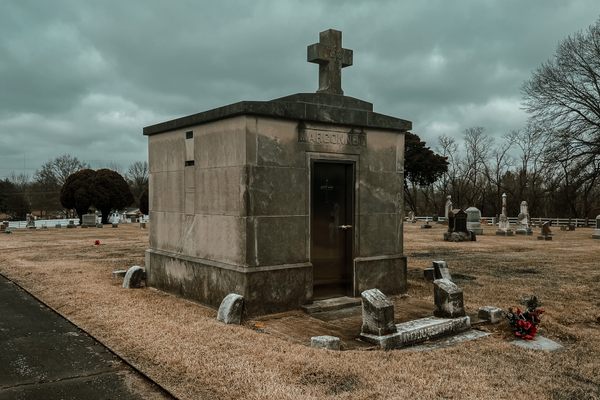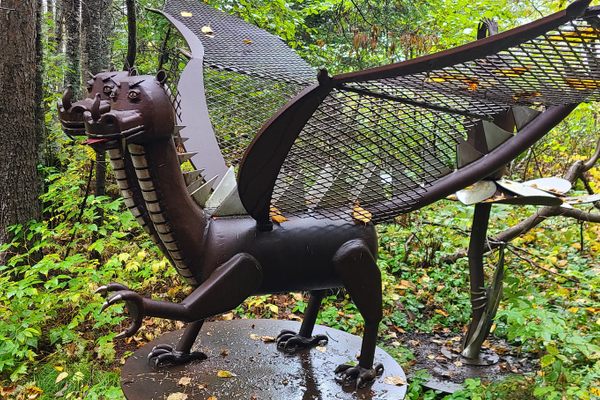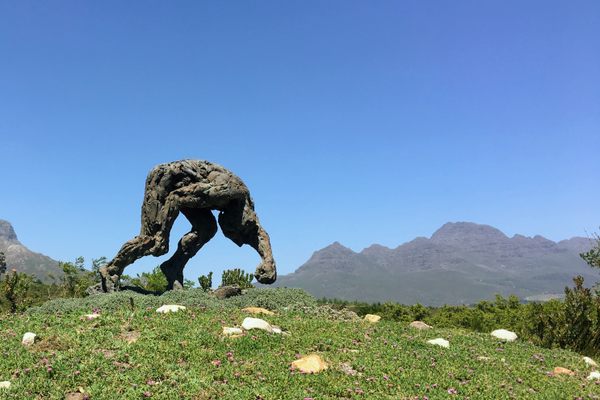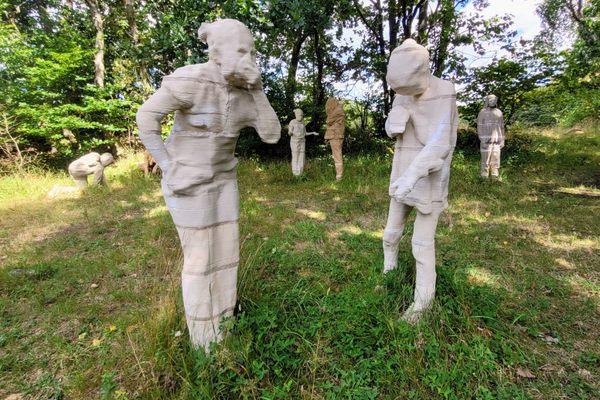AO Edited
Laumeier Sculpture Park
Giant works of art interspersed throughout meadows and woodlands offer a new discovery at every turn.
Every step through the woods and meadows of Laumeier Sculpture Park reveals a new exciting discovery. A chain of giant spheres that look like a slithering extraterrestrial creature. Imposing mounds of earth that seem to have been left behind by an ancient civilization. A conglomeration of flaming-red steel oil tanks. Each piece of sculptural art scattered throughout the landscape creates a new way for visitors to experience their surroundings.
Visitors are immersed in an art-filled landscape immediately upon arriving at the park. Standing at the center of the park’s two main lawns is Alexander Liberman’s The Way, a gigantic assemblage of salvaged steel oil tanks that play on the Gateway Arch in downtown St. Louis. The lawns are dotted with larger-than-life sculptures including Tony Tasset’s disembodied Eye, which stares out over the meadow and his oversized, perpetually grazing Deer, as well as Charles Ginnever’s Crete, which resembles a mountain range. Alongside the sculptures, there are miniature maquettes or each work so the visually impaired can enjoy the art as well.
Branching off from the park’s open meadows are a series of nature trails through the surrounding woodlands. Along the walking paths of the Central Pathway and Art Hike Trail, visitors will find works of art nestled among and often intertwined with the trees and the ground. One of the woodland works is Pool Complex: Orchard Valley by New York artist Mary Miss.
Constructed between 1983 and 1985, the site-specific installation is composed of a series of wooden pavilions built around the remnants of a massive pool from the early 20th century. The pool, originally a pond, was once part of the Hedenkamp estate. The estate was known as Orchard Valley for its apple trees. In 1929, the family decided to convert the pond into a swimming pool for their three young sons. The estate was eventually abandoned and the pool, which had been taken over by nature, was discovered after the land was acquired for the park. The foundation of the pool along with old pipes, benches, and stone columns hint at what once was, while visitors to the park bring life back to the forgotten site.
Laumeier Sculpture Park is named for the German family who once owned the majority of property on which the park now stands. The name is pronounced “Lau” (like “now”)–”meier” (like “higher”), the traditional German pronunciation. In her will, Matilda Laumeier bequeathed 72-acres of land to the park in honor of her late husband Henry Laumeier. Included in that gift was also the 1917 stone estate house the Laumeiers lived in, now the park’s Kranzberg Education Lab.
The park officially opened in 1976 as one of the first and largest sculpture parks in the United States. Local artist Ernest Trova donated 40 pieces of his own art to get the collection started. Since then, the park has grown to 105 acres with more than 70 artworks.
Know Before You Go
The Park is open from 8 a.m. until 30 minutes past sunset.
The Park is free and open to the public year-round, with the exception of special events. Laumeier is closed to the public the Thursday–Sunday of Art Fair weekend in May and Christmas Day, December 25.

























Follow us on Twitter to get the latest on the world's hidden wonders.
Like us on Facebook to get the latest on the world's hidden wonders.
Follow us on Twitter Like us on Facebook